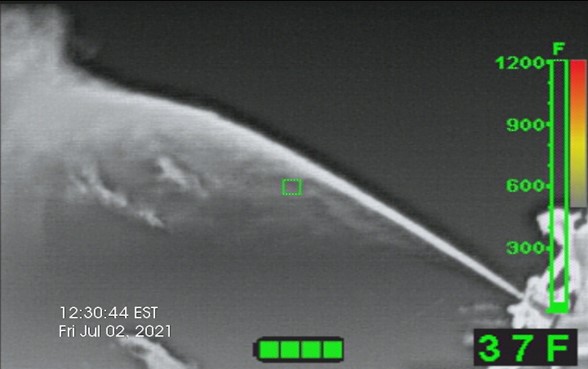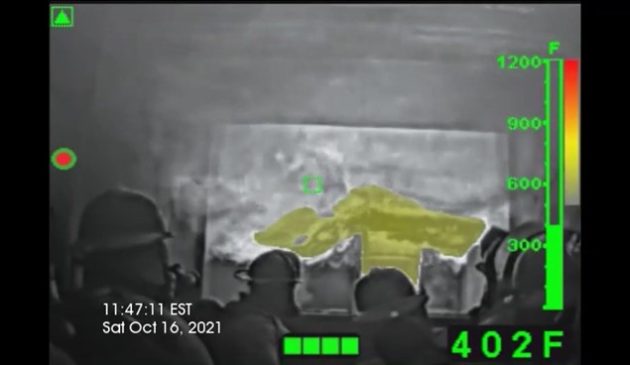
It’s all about TRAINING: Where can’t I use a thermal imager?
By Manfred Kihn
Features Uncategorized Training Week firefighter trainingI love seeing the reactions when I ask firefighters if they use their thermal imagers (TI) on every call that they go on. One day, I had an opportunity to meet with a deputy chief, chief training officer and a training officer, and I asked them that same question — did their firefighters use thermal imagers on every call that they responded to? All three looked at each other and said “No!” I asked them if their imagers were used for size up and again the answer was no. How about making initial entry for suppression and victim search and rescue? Again, no. Okay, I give up. When do they use their thermal imagers? For OVERHAUL I was told! So, this great piece of technology is just sitting in the apparatus while the firefighters are doing all the hard work! What do you think, sound like under-utilized technology? It’s all about TRAINING!
Once, I was at a fire station when crews were called out and they arrived on scene within a few minutes. About five minutes later the officer called over the radio for someone to bring in the thermal imager off the Engine. With technology in thermal imaging evolving so rapidly, TIs have gone from about 6.5 lbs to 1.5 lbs (and of course, most importantly, they have come down in price). There should be no excuse for someone on your crew not to be carrying the TI. Just like your radios, flashlights or Halligan bar, your TI is also an extremely useful tool…only if you remember to use it. It’s all about TRAINING!
Here are some different applications:
Search and rescue Electrical emergencies
Wildland fire fighting Safety officer
Explosions Scene assessment
Overhaul Motor vehicle incidents
Fire attack Aircraft emergencies
Size up Law enforcement
Hazmat Ventilation
Water rescue Line placement
Confined space Rehabilitation
Overheated machinery Training
Accountability EMS
Incident command Building construction
Fire/Arson investigations RIC
Fire prevention Aerial operations
A thermal imager is an extremely valuable tool in the toolbox. If in doubt, pull it out and use it to see what kind of information you can read from it. The more you use it, the more proficient you will be. It’s all about TRAINING.
- Fire prevention inspections/Smells & Bells: Electrical panels for overheated breakers, buried electrical cords being walked on, overheated ballasts, etc.
- EMS calls: Patient assessment for frost bite, hypothermia, water rescue or mass casualty triage at a bus incident.
- Training Instructors monitoring the safety of their students and even recording the events for a later playback.
- Overheated machinery incidents which may include motors, bearings, and conveyers.
- Missing persons: Lost six year little old girl or Alzheimer’s patient from the seniors home, or how many occupants are in the vehicle rollover.
- Getting the TI up into the basket of the aerial so the firefighter can see what he is doing through the thick smokey conditions while also assessing for structural integrity and exposure protection which is valuable information for Command to know.
Are any of these above responses actual working fires? No, but they are to do with other responses that fire departments are tasked to respond to.

Monitoring a deck gun flowing water. Photo courtesy of Bullard.
Now that I hope I’ve convinced you to use a TI on every call you respond to, let’s talk about the limitations of using them:
- Infrared (I/R) can only see to the nearest surface; it cannot see through walls and it is not X-ray vision.
- Reflections (multiple images) can mess us up on shiny surfaces such as gloss paints, shiny wall papered walls, shiny linoleum, hardwood or painted concrete floors, mirrors, etc.
- We also cannot see through glass (unless century old lead based), so unless the glass changes colour from the heat during size-up, don’t expect to see into the room. As a side note, some TI manufactures have what is called a video overlay which allows them to see through glass. The video does but not the infrared part.
- I/R cannot see into water so unless the victim is on the surface during water rescue, thermal imagers do not work for underwater body recovery or fishing.
- Another limitation is daytime victim search and rescue or other operations on a hot sunny day (solar loading). The imager will pick up every object that is warm/hot.
Unless you have used your thermal imager to find out and understand these limitations, finding these out at an actual emergency situation is not a good option. It’s all about TRAINING!

Monitoring students during flashover training. Photo courtesy of Bullard.
Conclusion
Get creative during all training drills to include your thermal imagers — after all, they are not just for use in overhaul. It’s all about TRAINING!
Until next time, stay safe and train often.
Manfred Kihn is a 19-year veteran of the fire service, having served as an ambulance officer, emergency services specialist, firefighter, captain, and fire chief. He has been a member of Bullard’s Emergency Responder team since 2005 and is the company’s fire training specialist for thermal imaging technology. He is certified through the Law Enforcement Thermographers’ Association (LETA) as a thermal imaging instructor and is a recipient of the Ontario Medal for Firefighters Bravery. If you have questions about thermal imaging, you can e-mail him at manfred_kihn@bullard.com.
Print this page